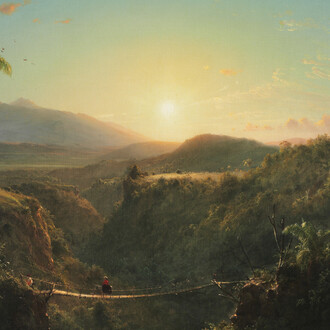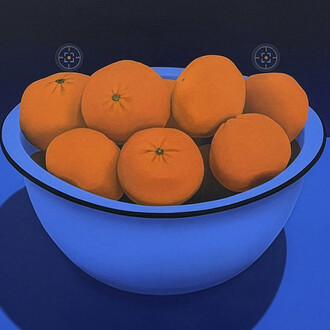The Etruscan Italy Gallery tells the story of the Etruscan peoples, the first great rulers of central Italy (800 - 100 BCE), and their empire-building Roman successors (500 BCE - 500 CE). Highlights from The Etruscan World include exceptionally fine bucchero pottery, fired dark gray and black in shapes that recall luxury metalwork. There are grand carved sarcophagi and ash urns with detailed sculptured images of Etruscan men and women. Terracotta architectural ornaments from temples, some adorned with relief heads, evoke the intriguing world of Etruscan religion and mythology. Granulated and filigreed gold jewelry, as elegant today as in antiquity, give evidence of high technical skills.
The Etruscans dominated the central part of the Italic peninsula during the late 8th through the 6th centuries BCE. Their economy depended largely on trade, and their commercial contacts favored the Greek colonies in Southern Italy and Sicily. They imported Greek pottery in great quantity, and, in fact, much of the Greek pottery preserved to us from antiquity was found in Etruscan tombs. Etruscans were influential in transforming Rome into an urban center in the 6th century BCE and Roman tradition identifies a family of Etruscans, the Tarquins, as the last dynastic rulers of Rome. Although their civilization was eventually eclipsed by Roman rule, their legacy lived on in Roman customs and culture.
The Etruscan people and their long-lived civilization are known from contemporary Greek commentary-– much of which painted a decadent portrait of these people--and through their own sophisticated and remarkable art and artifacts, mostly unearthed from Etruscan tombs. The Etruscan civilization has received a significant renaissance of interest in recent years, as archaeologists and historians work to understand the Etruscans’ unique language and customs and to elucidate the Etruscan contributions to Roman culture – especially Roman numerals and the Latin alphabet, religious rituals, concepts of city planning and tiled roofs. Penn Museum’s Etruscan collection is among the finest in the United States and encompasses the full range of Etruscan culture from the 8th century BCE to the final days of Etruscan civilization in the 1st century BCE.
Engraved gems, bronze statuettes, arms and armor, and terracotta vessels all point to a once-prosperous and influential culture. A brief audio segment invites the visitor to hear the unusual sounds of the Etruscan language. Six rare Etruscan inscriptions are on display in this gallery, with an explanation of the importance of the Etruscan language for understanding who these people were and where they came from.
At the height of their civilization in the late 8th through 6th centuries BCE, the Etruscans gained wealth from their rich mines and lively trade with their neighbors, including the Greeks. The Etruscans greatly admired and collected Greek art and, in fact, most of the exceptional Greek pottery in The Greek World gallery comes from Etruscan tombs. This "intertwined" relationship between the Greeks and the Etruscans is a key theme of the new exhibition.
The Penn Museum's Mediterranean galleries highlight more than one thousand artifacts including marble and bronze sculptures, jewelry, metalwork, mosaics, glass vessels, gold and silver coins, and pottery from the Museum’s outstanding Mediterranean collection of more than 30,000 objects, which date from 3000 BCE to the 5th century CE.
















